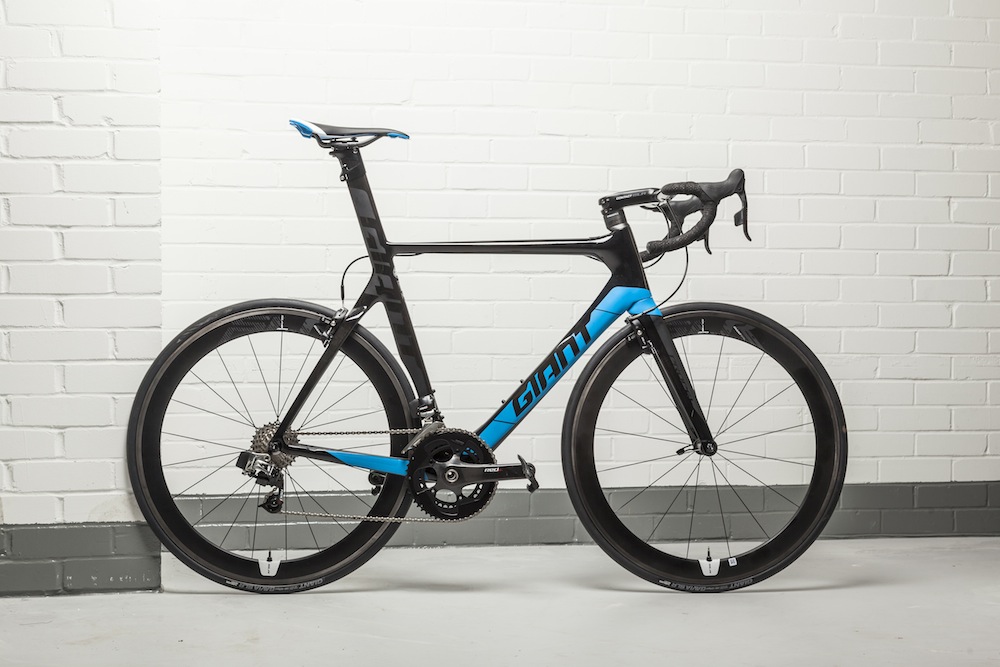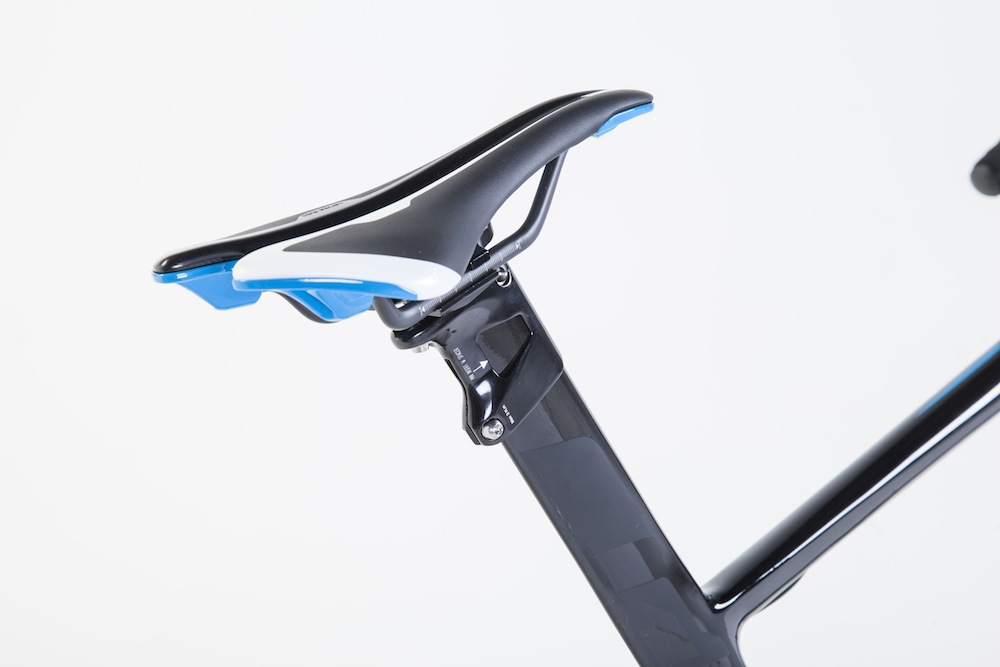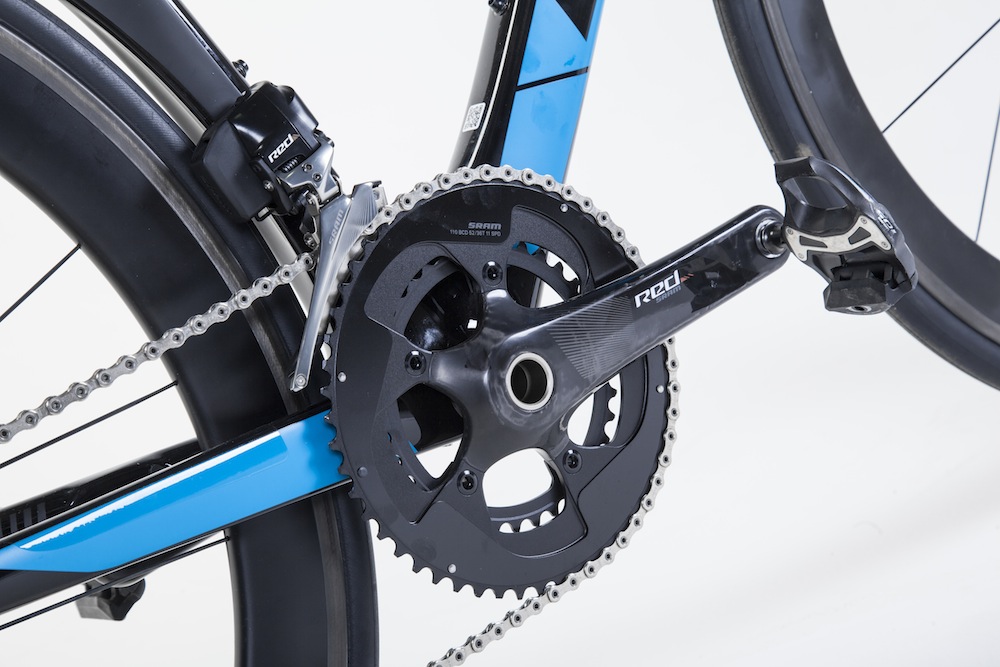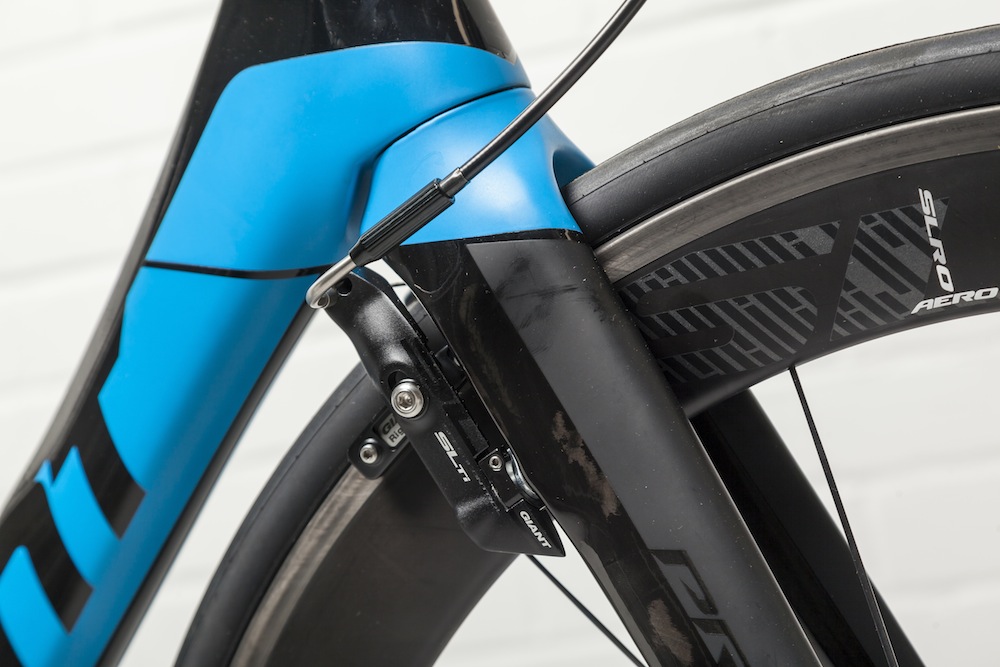Giant Propel Advanced SL 0 review
Launched back in 2013, the Giant Propel Advanced SL 0 has been around a while but it remains a top-spec aero bike and is used by the Giant Sunweb team. How does it stack up against more modern alternatives?

The Giant Propel Advanced SL is starting to show its age against more modern aero bike designs. Our aero testing suggests it is not as slippery as the Trek Madone or Specialised Venge ViAS and it is a harsh ride over rough surfaces too. However it remains a superb bike, offering great value and spec. The Giant Propel feels made for cornering at speed too, with excellent balance, geometry and handling.
-
+
Stiff
-
+
Light
-
+
Great spec
-
+
Great handling
-
-
Integrated seatpost
-
-
Not the most aero
-
-
Harsh ride
You can trust Cycling Weekly.
Frame
The Giant Propel Advanced SL features bladed tube sections designed to minimise drag, and Giant's integrated Speed Control SL brakes from TRP.
Black Friday deal:
- Buy now: Giant Propel Advanced Pro 2 2017 Road Bike for £1799.99 (from £2648.99) at Rutland Cycling
- Buy now: Giant Propel Advanced 1 2017 Road Bike for £1277.49 (from £1824.99) at Rutland Cycling
Constructed on the Advanced SL frameset, the Giant Propel has an integrated seatpost, unlike the second-tier Advanced, which uses an aero post that's adjustable in a conventional way.
- Read more: the best aero bikes buyers guide
- Buy now: from Tredz (with SRAM Red eTap) for £6299
The integrated seatpost helps keep the weight down to a respectable 6.84kg – although it is worth noting that the low weight is aided by the speccing of SRAM Red eTap rather than the Dura-Ace found on aero bikes from rival brands. I am not a fan of the integrated seatpost, purely from a practicality standpoint, as it can make reselling the bike difficult once cut down, and is hard to pack into bike boxes.

Specification
No arguments here: SRAM Red eTap is great and Giant has included Blip sprint shifters too, which allow you to change gear in the drops. Little touches like this mark the Giant out against other top-spec aero machines such as the Venge ViAS or Cérvelo S5 and represent good value for money.
>>> Giant Bikes: which model is right for you?
I was impressed with the quality of Giant’s proprietary components. The tubeless SLR 0 wheels in particular are highlight, as is the Giant carbon-railed saddle. The wheels arrived set up tubeless with Giant's own tyres, which rolled well, and I felt confident in the grip on offer too.
The latest race content, interviews, features, reviews and expert buying guides, direct to your inbox!

The Giant Propel Advanced SL 0 also comes complete with Giant's own integrated aero bar and stem. I got on well with the shape – it's fairly neutral. Should you want to change the stem bear in mind that Giant uses a larger steerer diameter, limiting stem choice.

Riding
Out on the road, the Propel rides very well. The handling is spot-on and the frame feels beautifully balanced in the corners. It’s very stiff too, giving that clichéd sensation of no watts being lost through flex when you give it the beans up sharp inclines or sprints. By comparison, the Venge ViAS feels slightly stiffer, but it is significantly heavier and more expensive. The Propel doesn’t like rough surfaces though, and is much less compliant than the Canyon Aeroad and Trek Madone – something which was glaringly apparent on a 75-metre stretch of cobbles next to the Cycling Weekly office.

Although aero, this bike doesn’t feel as fast as the Madone when on the open road. It does, however, handle well and feel stable in crosswinds.
Aero testing with WattShop at Derby Velodrome placed the Giant Propel Advanced SL 0 last in our group test of five aero bikes, by a significant margin. I should point out that the Propel was the only bike without an out-front Garmin mount, meaning the Garmin was mounted on top of them the stem – something which could conceivably account for a few watts of increased drag, but not the whole deficit.
The integrated TRP brakes are OK, but not as good as the Shimano calipers with regard to power and modulation. Furthermore they aren't as easy to adjust – a slight issue if your training wheels are a different width to your race wheels.

Value
Our data suggests it may be the slowest out of the five bikes tested (more on this to come), but at £6,299 the Giant offers impressive value against other top-spec aero bikes. For example, the Cérvelo S5 features a similar spec and costs £9,000 in a SRAM Red eTap build. The frame is World Tour level and the spec is great. It's a race-ready machine with no need to change any components.
Frame 7/10
Specification 9/10
Ride 7/10
Value 9/10
Oliver Bridgewood - no, Doctor Oliver Bridgewood - is a PhD Chemist who discovered a love of cycling. He enjoys racing time trials, hill climbs, road races and criteriums. During his time at Cycling Weekly, he worked predominantly within the tech team, also utilising his science background to produce insightful fitness articles, before moving to an entirely video-focused role heading up the Cycling Weekly YouTube channel, where his feature-length documentary 'Project 49' was his crowning glory.